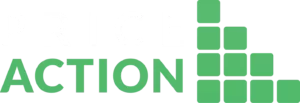Commodities are interchangeable fundamental products which are basically the recyclables of the economy. Hard commodities could be extracted or found, for example, gold, and silver, whereas soft goods are grown, for example, crops or animals.
Because of the fact that commodities are the inspiration associated with an economy, cost fluctuations may have a huge impact on the following prices of products there – whether this is rising oil prices rendering gas more costly or crop prices falling, departing fundamental foods cheaper.
Commodities also play a vital role for traders and investors. Commodities are utilized like a buying and selling and investment tool to diversify holdings and store value during particularly volatile markets or short bear dips. For example, gold may also be considered a hedge against inflation or perhaps a store of worth in occasions of monetary crisis.
Commodity traders buy, sell and thus exchange goods with each other. Typically, the typical trader or investor wouldn’t involve themselves during these markets because of how long, money and expertise they required. However, nowadays there are readily available techniques to gain exposure within the goods market.
History of commodity trading
Dealing with commodities is definitely an old profession, dating back to buying and selling bonds and stocks. Ancient civilizations traded several commodities, from seashells to spices. Commodity trading was an important business. The might of empires may very well be somewhat proportionate for their capability to create and manage complex trading systems and facilitate commodity exchange, becoming the wheels of commerce, economic development, and taxation for any kingdom’s treasuries. Although the majority of the principals were individuals who really produced or used the physical goods in some manner, there have been doubtless speculators wanting to bet a drachma or more around the approaching wheat harvest, for example
Types of commodities
Commodities are broadly split up into two groups: soft and hard. Hard commodities are individuals that should be extracted or found. These include gas, oil, gold and silver and rubber. Alternatively, soft commodities are individuals which are grown, for example, animals, crops or produce. Hard commodities could be further split into two groups: 1. Metals, like gold, silver or copper and a pair of. energy, like oil or gas. Soft commodities may also be split up into two more refined groups: 1. animals, for example, live cattle or lean hog and a pair of. farming, for example, cacao, coffee and soya beans
How to trade commodities: commodity trading basics
There are numerous ways to trade commodities such as:
- Purchasing the tangible asset: Traders can buy the asset itself, the most direct approach to purchasing commodities. For example, someone buying gold bullion. However, they will have to keep assets until they will be ready to sell. There’s even the added complication of indivisibility, for example, you are able to only purchase or sell the set quantity of rare metal.
- Investing in an exchange-traded fund (ETF): It’s not uncommon for people to achieve contact with the commodities market by buying commodity-based ETFs. An ETF is really a fund that’s traded with an exchange. With commodity ETFs, there’s the chance to purchase physical commodity ETFs, in which the ETF comes with an effective entitlement to that particular commodity. Alternatively, you will find ETFs that make an effort to track the need for goods by including the fund of stocks in firms that take part in goods for example mining or farming stocks. This kind of ETF may have a more volatile cost with regards to the actual commodity.
- Trading a futures contract: One method to trade commodities is as simple as trading a futures contract. A futures contract on the commodity is definitely an agreement to purchase or sell a set quantity of an investment at a certain cost and specified date later on. The trader will profit when their purchase or sell order is aligned using the market cost. Futures contracts really are a derivative, which means that they need for anything that comes from the actual asset that’s itself not owned.
- Trading a contract for difference (CFD): Individuals can trade a CFD on goods to achieve exposure during these markets. An agreement for the difference is definitely an agreement to pay for the main difference within the cost of the underlying asset between your open and shut off this contract. CFDs are derivatives that are traded on margin, and therefore you just set up a proportion of the need for the trade and effectively borrow the remainder out of your broker. Leveraged trading enables greater contact with markets given a smaller sized initial amount. Whenever you trade goods on CFDs there are many advantages, for example, being exempt from stamp duty in addition to being in a position to trade in greater volumes.
Exercise caution within the commodity markets, research your options and approach these volatile instruments carefully and with trepidation. While fortunes may come from goods buying and selling, the opportunity of losses is equally as great. Since all commodity futures trading is leveraged and needs using margin, you need to diligently research and seek education around the rules and results of buying and selling futures with margin. You need to clearly understand how much cash you can lose for the reason that the atmosphere. It’s also wise to research how you can prevent loss when you are buying and selling and spend many hrs practicing and honing your talent before you decide to put anything in danger of the endeavor.

